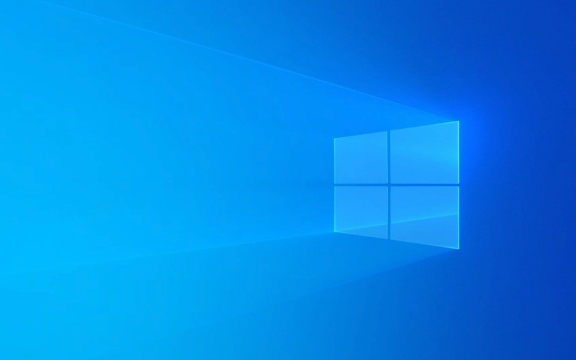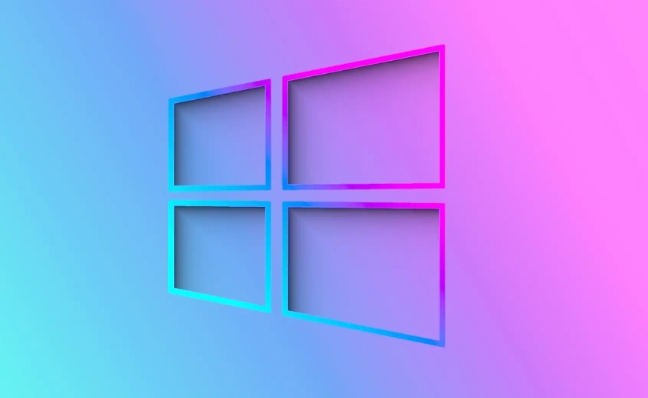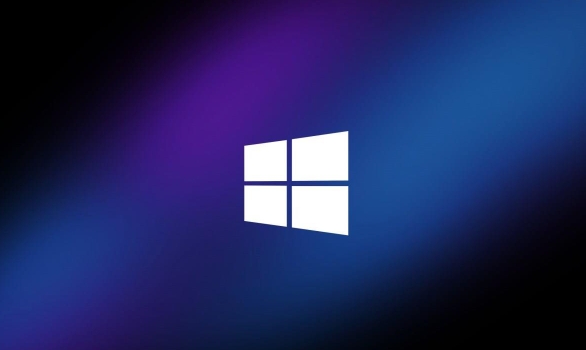 Computer Tutorials
Computer Tutorials
 Computer Knowledge
Computer Knowledge
 How to Diagnose and Fix Blue Screen of Death (BSOD) Errors
How to Diagnose and Fix Blue Screen of Death (BSOD) Errors
How to Diagnose and Fix Blue Screen of Death (BSOD) Errors
Jul 30, 2025 am 02:00 AMIdentify the BSOD stop code and related files using the blue screen, Reliability Monitor, or Event Viewer to determine if the cause is hardware, driver, or software related. 2. Boot into Safe Mode by triggering Automatic Repair and selecting Startup Settings to isolate software or driver conflicts, then uninstall recent programs or perform a clean boot via msconfig. 3. Update or roll back problematic drivers—especially for display, network, and storage adapters—through Device Manager, prioritizing downloads from manufacturer websites over Windows Update. 4. Install pending Windows updates via Settings > Update & Security, or uninstall recent updates if they triggered the issue. 5. Test hardware including RAM with Windows Memory Diagnostic or MemTest86, check disk health using CHKDSK and CrystalDiskInfo, monitor temperatures with HWMonitor or Core Temp for overheating, and evaluate PSU stability under load. 6. Analyze minidump files (C:\Windows\Minidump*.dmp) using tools like BlueScreenView or WinDbg to identify the faulting module and crash stack trace. 7. As a last resort, reset Windows via Settings > Recovery or perform a clean OS reinstall from USB to eliminate persistent software corruption, ensuring all other diagnostic steps have been completed first.

Blue Screen of Death (BSOD) errors can be frustrating—your computer crashes, a blue screen appears with a cryptic error message, and you lose your work. But while BSODs look scary, they’re usually fixable once you understand the root cause. Here’s how to diagnose and fix them effectively.

1. Understand the Error Code and Stop Code
The first step in fixing a BSOD is identifying the stop code—the specific error message displayed on the blue screen. Common examples include:
- IRQL_NOT_LESS_OR_EQUAL
- KERNEL_SECURITY_CHECK_FAILURE
- PAGE_FAULT_IN_NONPAGED_AREA
- SYSTEM_THREAD_EXCEPTION_NOT_HANDLED
- MEMORY_MANAGEMENT
? What to do:

- Write down the exact stop code and any referenced file (e.g.,
dxgkrnl.sys,nvlddmkm.sys). - Use Windows’ built-in Reliability Monitor (
reliability monitorin Start menu) to review past crashes and get more details. - Check Event Viewer (search in Start menu) under Windows Logs > System for critical errors around the time of the crash.
This info helps narrow down whether the issue is hardware, driver, or software related.
2. Boot into Safe Mode and Rule Out Software Conflicts
If your PC keeps crashing, boot into Safe Mode to disable third-party drivers and startup programs.

? How to enter Safe Mode:
- Restart your PC and interrupt the boot process 3 times to trigger Automatic Repair.
- Go to Troubleshoot > Advanced Options > Startup Settings > Restart.
- Press F4 to enable Safe Mode.
Once in Safe Mode:
- If the system is stable, the BSOD is likely caused by a driver or software conflict.
- Uninstall recently installed programs or updates.
- Run a clean boot (via
msconfig) to disable non-Microsoft services and see if the issue persists.
3. Update or Roll Back Drivers
Faulty or outdated drivers are a leading cause of BSODs—especially graphics, network, and chipset drivers.
? Steps to fix driver issues:
- Open Device Manager (right-click Start button).
- Look for devices with a yellow warning icon.
- Right-click and Update driver—choose “Search automatically for drivers.”
- If the BSOD started after a recent driver update, roll back the driver (Properties > Driver tab > Roll Back Driver).
- Pay special attention to:
- Display adapters (GPU drivers)
- Network adapters
- Storage controllers
? Pro tip: Download drivers directly from your PC manufacturer’s website or component vendors (e.g., NVIDIA, Intel) instead of relying solely on Windows Update.
4. Check for Windows and System Updates
Microsoft regularly releases patches that fix known bugs causing system crashes.
? What to do:
- Go to Settings > Update & Security > Windows Update.
- Install all pending updates.
- If a recent update caused the problem, use Settings > Update > Recovery to uninstall it.
5. Test Your Hardware
BSODs can stem from failing hardware. Key components to check:
RAM (Memory)
- Use Windows Memory Diagnostic:
- Type Windows Memory Diagnostic in Start.
- Choose “Restart now and check for problems.”
- Or use MemTest86 for a more thorough test (run from USB).
Hard Drive / SSD
- Run CHKDSK:
- Open Command Prompt as admin.
- Type
chkdsk C: /f /rand press Enter. - Schedule it for the next restart.
- Use tools like CrystalDiskInfo to check drive health (SMART status).
Overheating
- Use tools like HWMonitor or Core Temp to check CPU/GPU temperatures.
- Clean dust from fans and vents.
- Ensure proper airflow and consider repasting thermal compound if temps are high.
Power Supply (PSU)
- Random crashes under load could point to a failing PSU.
- Consider testing with a known-good power supply if other checks pass.
6. Analyze Crash Dumps
Windows creates memory dump files (C:\Windows\Minidump\*.dmp) during BSODs. Analyzing them can reveal the culprit.
? How to analyze:
- Download BlueScreenView (free tool) or WinDbg from Microsoft.
- Open the dump file and look for:
- The faulting module (e.g., a driver file).
- Stack trace showing what led to the crash.
This is especially helpful if the stop code isn’t clear.
7. Reset or Reinstall Windows (Last Resort)
If all else fails and the system remains unstable:
- Use Reset this PC (Settings > System > Recovery).
- Choose to keep files or remove everything.
- Reinstall Windows cleanly from a USB drive if needed.
This eliminates deep software corruption and gives a fresh start.
BSODs aren’t always easy to fix, but by systematically checking drivers, updates, hardware, and logs, you can usually pinpoint the cause. Keep notes on when crashes happen (e.g., during gaming, startup, idle) to help identify patterns.
Basically, start simple—check the error code, update drivers, run diagnostics—and work your way up to hardware and OS reset if needed.
The above is the detailed content of How to Diagnose and Fix Blue Screen of Death (BSOD) Errors. For more information, please follow other related articles on the PHP Chinese website!

Hot AI Tools

Undress AI Tool
Undress images for free

Undresser.AI Undress
AI-powered app for creating realistic nude photos

AI Clothes Remover
Online AI tool for removing clothes from photos.

Clothoff.io
AI clothes remover

Video Face Swap
Swap faces in any video effortlessly with our completely free AI face swap tool!

Hot Article

Hot Tools

Notepad++7.3.1
Easy-to-use and free code editor

SublimeText3 Chinese version
Chinese version, very easy to use

Zend Studio 13.0.1
Powerful PHP integrated development environment

Dreamweaver CS6
Visual web development tools

SublimeText3 Mac version
God-level code editing software (SublimeText3)
 Google Translate Picture | Translate Text in Images - MiniTool
Jul 12, 2025 am 12:57 AM
Google Translate Picture | Translate Text in Images - MiniTool
Jul 12, 2025 am 12:57 AM
This Google translate picture guide shows you how to translate text from an image. If you are looking for more computer tips and solutions, you can visit php.cn Software official website where you can also find some useful computer tools like php.cn
 How to Install Device Drivers Manually on Windows 11/10? - MiniTool
Jul 06, 2025 am 12:15 AM
How to Install Device Drivers Manually on Windows 11/10? - MiniTool
Jul 06, 2025 am 12:15 AM
If your Windows 11/10 computer doesn’t automatically the latest versions of device drivers, you will need to manually install them. In this post, php.cn Software will show you 3 different methods to manually install drivers on your device.
 How to Amplify/Boost/Increase Microphone Volume Windows 11? - MiniTool
Jul 06, 2025 am 12:27 AM
How to Amplify/Boost/Increase Microphone Volume Windows 11? - MiniTool
Jul 06, 2025 am 12:27 AM
This post delivered by php.cn official web page introduces three methods to improve microphone volume and boost its performance, in Control Panel, via Settings, and by Device Manager. Read the below content to view details.
 How to Open and Run dxdiag.exe on Windows 10/11
Jul 06, 2025 am 12:23 AM
How to Open and Run dxdiag.exe on Windows 10/11
Jul 06, 2025 am 12:23 AM
This post includes answers for what is dxdiag, how to run dxdiag in Windows 10/11, DirectX Diagnostic Tool’s main functions, and how to update dxdiag.exe driver. php.cn Software also provides many other computer tips and solutions for users. You can
 Best Ways to Fix Windows 11/10 Control Panel Not Opening!
Jul 08, 2025 am 12:01 AM
Best Ways to Fix Windows 11/10 Control Panel Not Opening!
Jul 08, 2025 am 12:01 AM
Have you ever wanted to adjust computer settings to fix some issues but suffered from Control Panel not opening? There is nothing more frustrating than this app not turning on, stopping you from viewing and changing system settings. In this post, mul
 what is an operating system
Jul 11, 2025 am 03:16 AM
what is an operating system
Jul 11, 2025 am 03:16 AM
The operating system is the basic software for managing hardware resources, running programs, and providing user interaction interfaces. It coordinates the relationship between hardware and software and is responsible for memory allocation, device scheduling, file management and multitasking. Common systems include Windows (suitable for office and gaming), macOS (Apple devices, suitable for creative work), Linux (open source, suitable for developers), and Android/iOS (mobile device system). The choice of ordinary users depends on the usage scenario, such as software compatibility, security and customization requirements. How to view system information: Use winver command for Windows, click on the machine for macOS, use terminal commands for Linux, and find the phone in settings. The operating system is the underlying tool for daily use,
 What Is Dell Digital Locker? How to Log in and Use It on Dell PC? - MiniTool
Jul 07, 2025 am 12:28 AM
What Is Dell Digital Locker? How to Log in and Use It on Dell PC? - MiniTool
Jul 07, 2025 am 12:28 AM
What is Dell Digital Locker? How to log into Dell Digital Locker? This post from php.cn provides answers. Besides, you can know how to use your Dell Digital Locker to find software products included with your Dell computer.
 How to Open Windows 11 Computer Management Console in 7 Ways? - MiniTool
Jul 09, 2025 am 12:18 AM
How to Open Windows 11 Computer Management Console in 7 Ways? - MiniTool
Jul 09, 2025 am 12:18 AM
This essay summarized by php.cn Software mainly teaches you how to open Windows 11 Computer Management with Windows Search, Quick Link menu, Run dialog, command prompt, PowerShell, File Explorer, Control Panel, as well as a desktop shortcut.





